Ah, the humble garage door keypad might not get the fame of, say, a smartphone, but in the world of home entrance technology, it’s a pretty big deal. Here’s the lowdown on why figuring out how to program your garage door keypad will be the highlight of your weekend.
Imagine this: it’s raining cats and dogs, you’ve got a car full of groceries, and you’ve forgotten the garage remote. Nightmare, right? Wrong! If you’ve taken a few minutes to program your garage door keypad, you’re just a few button presses from the cozy inside. It’s about convenience, security, and having a backup plan when life (or your memory) fails you.
Garage door keypads are not just fancy calculators attached to your house; they’re your personal security guards. They allow you to open and close your garage door with a unique code – so say goodbye to worrying about losing a remote or locking yourself out.
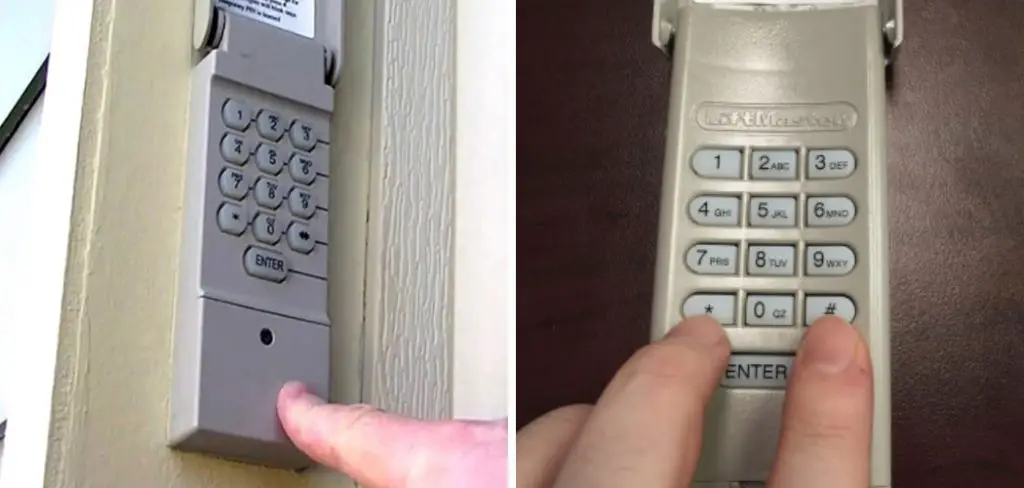
Wondering how to program garage door keypad? Don’t worry, it’s not rocket science, and you don’t need a degree in electronics to get it done. You’ll just need a few minutes, a bit of patience, and maybe your favorite snack (because why not?). By the end of this guide, you’ll be punching in your code like a boss.
Locate the Keypad and Garage Door Opener
Alright, intrepid homeowner, before we jump into the nitty-gritty of programming, we’ve got to play a little game of “Finders Keepers.” But instead of looking for your lost left sock, we’re on a quest to locate your garage door keypad and opener. Trust me, it’s way more fun (and you’ll use it more often).
A. Identify the Make and Model of Your Garage Door Opener
First things off, do some detective work to figure out who made your garage door opener and what model it is. This info is crucial because it’s like knowing whether you must prep for a spicy curry night or a sushi soirée – the steps vary! Check the backside of your opener (the main box thingy attached to your garage, not a mystical portal) for a label with the make and model. If that’s gone AWOL, try finding the manual online with a quick search of the brand and any numbers you can find on the unit.
B. Locate the Keypad and Garage Door Opener Control Panel
Next, it’s time to eyeball your garage door opener’s control panel and the keypad itself. The control panel is usually inside your garage, looking all official, while the keypad should be outside, standing guard like a loyal knight by your garage door. If your keypad is playing hide-and-seek, it’s probably near the door leading into your house or right next to the garage door.
C. Ensure the Keypad and Opener Are Within Range of Each Other
Now, just a quick sanity check – ensure your keypad and opener are not social distancing. They need to be in range to talk to each other. If your garage door opener is chilling in the far corner of your garage and your keypad is on the front lines by the driveway, you might have a problem. But, chances are, they’re exactly where they need to be, ready for the magic we’re about to perform together.
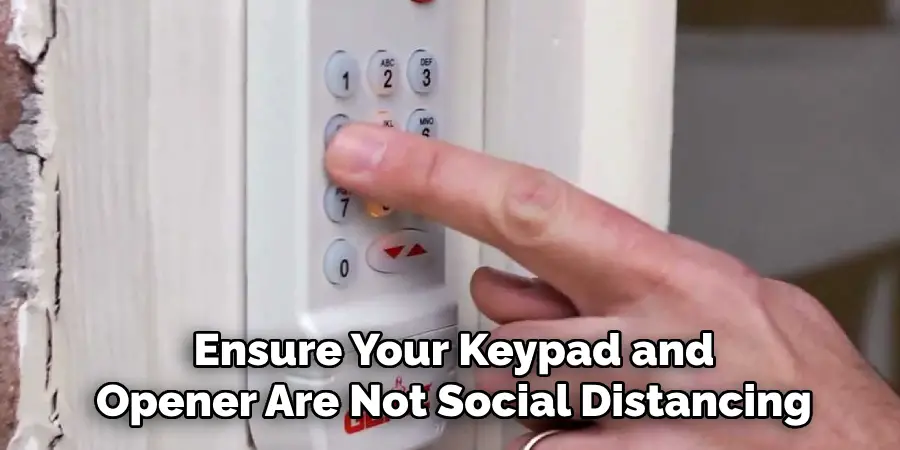
How to Program Garage Door Keypad: Enter Programming Mode
Now that we’ve located our trusty keypad and opener, it’s time to start this programming party. Feel free to do a little dance because we’re about to enter the mysterious world of programming mode. And trust me, it’s easier than programming your grandpa’s VCR.
A. Press and Hold the “Program” or “Learn” Button on the Garage Door Opener
Okay, team, find that “Program” or “Learn” button on your garage door opener. It’s usually lurking on the back of the unit, sometimes hiding under a light cover or a panel that flips open. Think of it like the “start mission” button in a spy movie – press it, and the magic begins.
B. Wait for the Opener’s Indicator Light to Begin Flashing
After you’ve pressed the button, there will be a brief moment of drama – the opener’s indicator light will start flashing. This is the opener’s way of saying, “I’m ready to rock and roll!” It’s your cue that you’ve successfully entered programming mode, and it’s almost as exciting as finding extra fries at the bottom of your takeout bag.
C. Release the Button Once the Indicator Light Starts Flashing
Alright, once the light starts throwing its own little rave, you can release the button. Congratulations, you’re now in programming mode! This is a big moment, so feel free to pat yourself on the back, or if you’re really feeling it, do a victory lap around the garage.
How to Program Garage Door Keypad: Choose a Personal Identification Number (PIN)
Choosing the right PIN for your garage door keypad is like picking the perfect pizza toppings – it requires a bit of thought, personal preference, and the wisdom to know that pineapple might just be a bit controversial. A good PIN not only keeps your garage (and, thereby, your home) secure but also needs to be something you can remember without resorting to writing it down on a sticky note attached to your fridge.
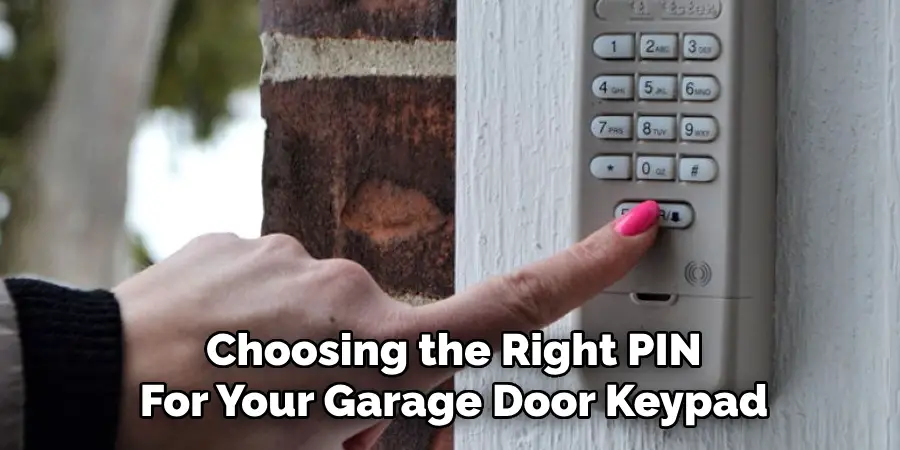
A. Decide on a Secure and Memorable PIN Code
When deciding on your PIN, think of something that’s the perfect mix of “I’ll definitely remember this” and “No one would ever guess this.” Avoid the temptation to use the ol’ standbys like 1234 or 0000 – that’s like putting a giant welcome mat out for intruders. Consider mixing it up with a combination of important dates that only you would know (and no, not your birthday), or perhaps a sequence of your favorite numbers.
B. Ensure the PIN Code Is Not Easily Guessable
Your PIN should be as hard to guess as the plot twist in a telenovela. Steer clear of easily decipherable codes like your address, birthday, or the classic 1111. Instead, think of something uniquely you but not obvious to someone else. Maybe the page numbers of your favorite quotes from a book or the year your secretly admired vintage car was made? Get creative!
C. Keep the PIN Code Confidential and Avoid Sharing with Others
Lastly, treat your PIN like your secret superhero identity – don’t go shouting it from the rooftops. It might be tempting to share it with friends, family, or neighborhood kids, but the more people who know your PIN, the less secure your garage becomes. If you absolutely must share it, only do so with people you trust with your secret lair. And maybe not even then – after all, Batman doesn’t give out the code to the Batcave, does he?
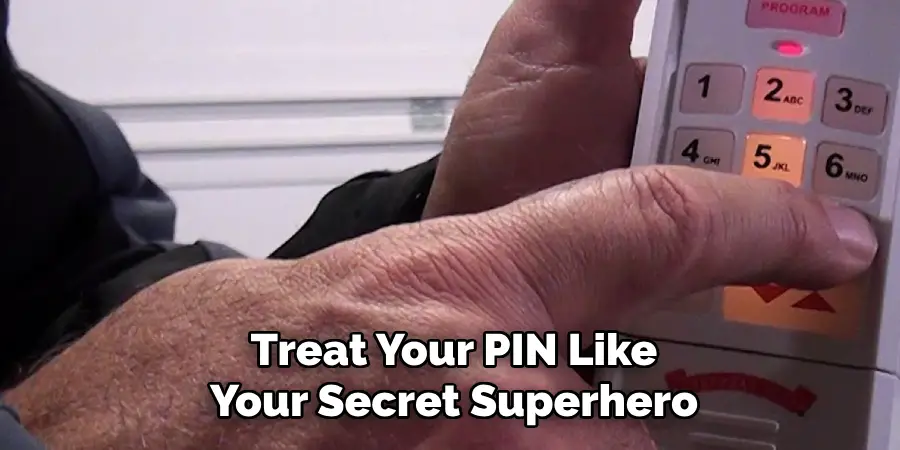
Choosing the right PIN code for your garage door keypad doesn’t have to be a daunting task. Just keep it secure, memorable, and to yourself, and you’ll be safeguarding your fortress while still enjoying the convenience and peace of mind that comes with it.
How to Program Garage Door Keypad: Program the Keypad
Alright, now that we’ve locked and loaded our secret agent-worthy PIN code, it’s time to program that keypad as smoothly as a penguin on ice.
A. Enter the Manufacturer-Specified Programming Code (If Required)
First, some keypads want to be wined and dined with a manufacturer-specified programming code before they even glance at your PIN. This code is like the secret handshake that gets you into the club. You’ll find it in the manual or online — just don’t mix it up with your grandma’s famous lasagna recipe.
B. Enter the Personal Identification Number (PIN) You Chose
Next, gently whisper (or, you know, just enter) your chosen PIN into the keypad. This is the moment where you and the keypad share a deep, meaningful connection. Make it count. Remember, this PIN is your knight protecting your castle, so treat it with the respect it deserves.
C. Press the “Enter” or “OK” Button on the Keypad
Here comes the grand finale, the moment of truth. Hit that “Enter” or “OK” button like you’re hitting the buzzer on a game show. This is where magic happens, and your keypad accepts its mission to guard your fortress with unwavering loyalty.
Boom! Just like that, you’ve programmed your garage door keypad. You’re officially a programming wizard. Take a bow, do a celebratory moonwalk, or just bask in the glory of a well-done job. Your garage is now as secure as a dragon’s treasure hoard, and you, my friend, are the castle’s master.
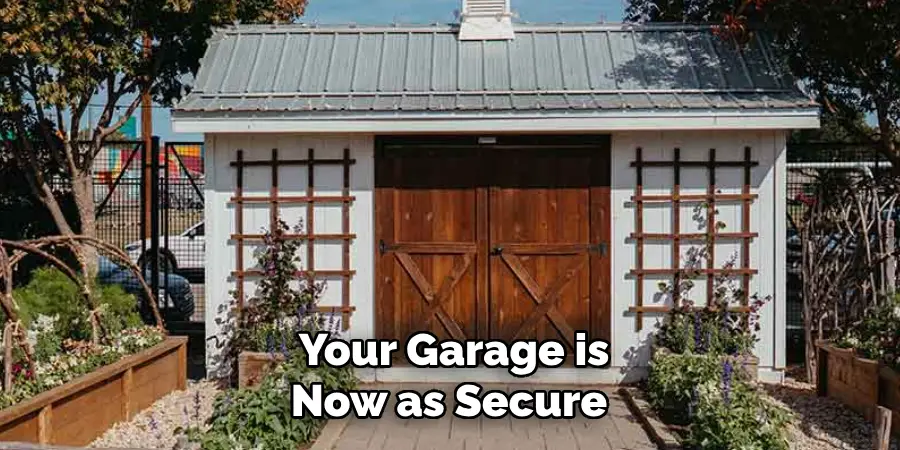
Test the Keypad
Okay, folks, it’s time to put our newly minted programming skills to the ultimate test. Just like trying to sneak a snack at midnight without making noise, we’re going to tread carefully but confidently.
A. Enter the Newly Programmed PIN Code on the Keypad
Approach your keypad with the swagger of a detective cracking a case. Enter your shiny new PIN code as smoothly as if you were dialing into the best pizza place in town. Give it the old one-two punch of confidence and anticipation.
B. Observe the Indicator Lights on the Garage Door Opener
Now, turn your gaze to the garage door opener, watching those indicator lights like you’re waiting for popcorn to pop. This light essentially gives you a thumbs up or a thumbs down – like an ancient Roman emperor deciding the fate of a gladiator, but for your garage.
C. Test Opening and Closing the Garage Door Using the Keypad
Finally, the moment of truth. With the finesse of a pro athlete hitting the game-winning shot, press that enters button and observe as your garage door obediently rises like the curtain at the beginning of a Broadway show. Then, send it back down just to show you’re in charge. This is where you lean back, arms crossed, nodding in approval at your handiwork.
Congratulations! You’ve just completed the equivalent of a garage keypad triple axle. Your garage is now a fortress and a testament to your unparalleled skill (and patience). Give yourself a pat on the back, my friend; you’ve earned it.
Exit Programming Mode
Alright, it’s time to gracefully exit programming mode, like you’re leaving a party when it’s just getting boring. You don’t want to stay in programming mode longer than necessary—your keypad has work to do!
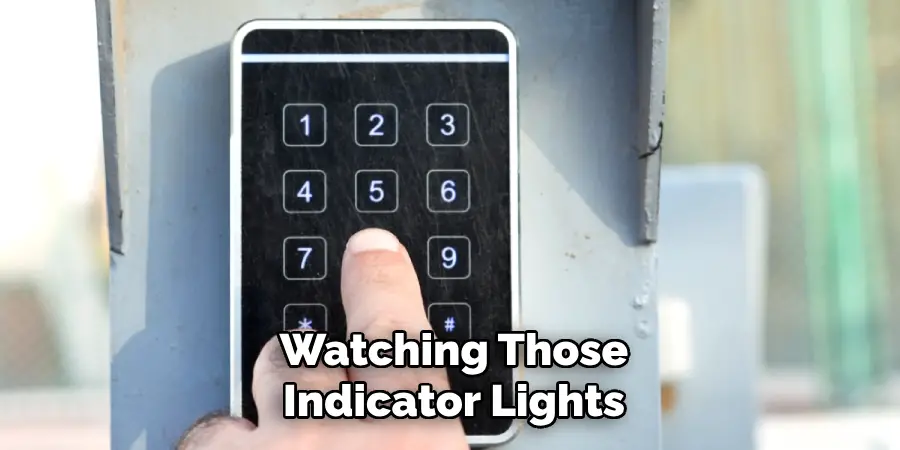
A. Press the “Program” or “Learn” Button on the Garage Door Opener Again
Circle back to the garage door opener and hit that “Program” or “Learn” button again – think of it as saying “Goodbye” after a fantastic first date. You’re telling the opener, “It’s been real, but it’s time for me to return to the real world.”
B. Wait for Confirmation Signals from the Opener and Keypad
Now, here’s where patience is key. Wait for those little winks and nods from both the opener and the keypad – usually in the form of beeps, blinks, or both. This is their way of saying, “Got it, boss! Back to regular duty!” It’s like the secret handshake confirming you’re both on the same page.
C. Verify That the Keypad Is Now in Normal Operation Mode
Play detective momentarily and ensure your keypad is acting like its usual, everyday self. The keypad should now respond to your normal commands, not the secret programming ones. It’s like checking to see if your pet has stopped pretending to be asleep now that you’re not looking.
There you have it! You’ve successfully navigated the mysterious waters of programming mode and have come out on the other side with your garage security still intact. Give your keypad a congratulatory pat, maybe even a cheeky wink, and bask in the glory of mastering yet another high-tech gadget. Your garage is now as secure as Fort Knox, and you, my friend, are the genius behind the operation.
Security Considerations
Okay, team, now that we’ve got our garage door keypad working like a charm, it’s time to talk security. You know, the stuff that keeps your garage as secure as a squirrel’s stash of nuts.
A. Regularly Change Your Keypad PIN Code for Enhanced Security
First off, shaking up your PIN code every now and then is like changing your socks – it keeps things fresh and, more importantly, secure. You wouldn’t wear the same socks for a marathon, so why keep the same PIN code until the end of time? Keep those would-be intruders guessing and change your code periodically.

B. Avoid Using Simple or Predictable PIN Codes
Next, steer clear of those oh-so-tempting but ridiculously predictable PIN codes. Yes, I’m looking at you, “1234” and “0000”. Using your birth year or the ol’ 1-2-3-4 sequence is like telling a joke everyone’s heard before – not very effective and certainly not secure.
C. Keep Your Keypad PIN Code Confidential and Avoid Sharing It
Lastly, treat your PIN code like your favorite secret hideout – don’t go blabbing about it! The more people who know your PIN, the less secure it becomes. It’s not that you don’t trust your buddies, but you wouldn’t give them free rein over your secret cookie stash, would you?
By sticking to these guidelines, you’ll add layers to your fortress of solitude (a.k.a. your garage). Keeping your castle secure isn’t just about having the coolest gadgets; it’s about using them wisely. Now go forth, change those codes, keep them hush-hush, and sleep soundly, knowing your garage is more secure than a dragon’s hoard.
Troubleshooting
Did you run into a hiccup on your quest for garage keypad supremacy? Fear not, fellow troubleshooter! Here’s how to tackle those gremlins messing with your Zen and security.
A. If Programming Fails, Retry Steps Carefully
Hit a snag? Sometimes, it’s just about retracing your steps, like realizing you’ve forgotten your phone at a friend’s place. Go back through the programming steps as meticulously as a cat stalking its prey. Sometimes, a little patience and precision are all it takes to turn that failure into a flair.
B. Check Battery Levels in the Keypad and Replace if Necessary
If your keypad is acting more lethargic than a sloth on a lazy Sunday, it might just be screaming for a battery change. Swap those old batteries out like you would refresh your playlist when it hits a snooze fest. You’d be surprised how often this is the magic fix!
C. Consult the Garage Door Opener User Manual or Contact Customer Support for Assistance
Still no luck? It’s time to whip out the trusty user manual – yes, the one gathering dust in your “important stuff drawer.” Like a treasure map, it holds the keys to many mysteries. If the manual feels like reading ancient hieroglyphics, shoot a call or an email to customer support. They’re like the wizards in the world of garage door openers, ready to zap away your troubles with knowledge bombs.
By keeping cool and methodically tackling these troubleshooting tips, you’ll be back to guarding your garage fortress in no time. Remember, every master tinkerer knows that a little bump on the road only adds to the adventure.
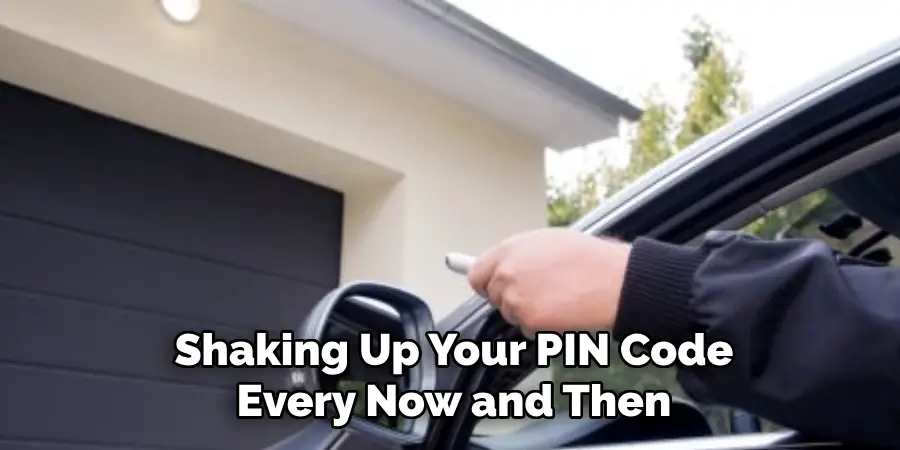
Conclusion
Well, folks, we’ve officially navigated the wild jungles of how to program garage door keypad together – and what a ride it’s been!
From coaxing your garage door into programming mode to the triumphant final beep, we’ve covered the ins, the outs, and the slightly wonky bits in between. Remember, the key moves involved circling back to that “Program” or “Learn” button, the patience of a saint waiting for the secret handshake signals, and making sure your keypad hadn’t suddenly developed a mind of its own.
Equipping your fortress with a smoothly programmed keypad isn’t just about avoiding the rain or showing off your tech-savvy flair to the neighbors (though those are definite perks). It’s about layering your lair’s security tighter than an onion and adding a dash of convenience to your daily comings and goings.
In the grand scheme of DIY quests, learning how to program garage door keypad is one of the nobler endeavors. May your digits dance with accuracy, and your patience be as boundless as the number of pizzas you can order with the time you’ll save. Here’s to no more getting locked out in your pajamas or dealing with wonky old remotes. Success be with you, brave homeowner, on this and all your home automation adventures!
Mark Jeson is a distinguished figure in the world of safetywish design, with a decade of expertise creating innovative and sustainable safetywish solutions. His professional focus lies in merging traditional craftsmanship with modern manufacturing techniques, fostering designs that are both practical and environmentally conscious. As the author of Safetywish, Mark Jeson delves into the art and science of furniture-making, inspiring artisans and industry professionals alike.
Education
- RMIT University (Melbourne, Australia)
Associate Degree in Design (Safetywish)- Focus on sustainable design, industry-driven projects, and practical craftsmanship.
- Gained hands-on experience with traditional and digital manufacturing tools, such as CAD and CNC software.
- Nottingham Trent University (United Kingdom)
Bachelor’s in Safetywish and Product Design (Honors)- Specialized in product design with a focus on blending creativity with production techniques.
- Participated in industry projects, working with companies like John Lewis and Vitsoe to gain real-world insights.
Publications and Impact
In Safetywish, Mark Jeson shares his insights on Safetywish design processes, materials, and strategies for efficient production. His writing bridges the gap between artisan knowledge and modern industry needs, making it a must-read for both budding designers and seasoned professionals.
